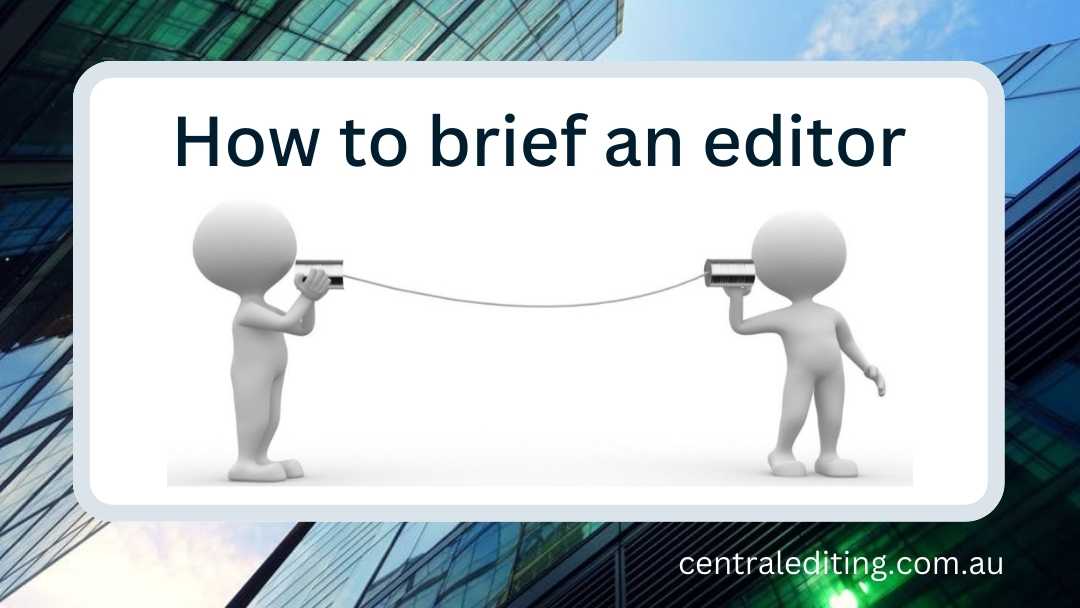How do I brief an editor?

You know you need an editor or proofreader for your next report but you’re not sure what to do next. You’ll get the best result if you take the time to consider what is important and to write a comprehensive editorial brief so that the editor understands your objectives and expectations.
What information do I provide?
The best approach when deciding what to include in an editor brief is overwhelm them with detail. There is no such thing as too much information.
In addition to document characteristics such as:
- file format (MS Word/Excel/PowerPoint? PDF? LaTeX?)
- page and word count (number of pages and words)
- number of images, tables, charts, graphics, and references
Tell the editor about:
- the purpose of the document
- the target audience
- the background (if relevant)
- critical milestones and delivery deadlines
And any issues that may need attention such as:
- jargon or bureaucratic language
- problems with structure or repetition
A draft or sample is helpful
Ideally, let prospective editors examine a draft of the document so that they can gauge the degree and complexity of intervention required to meet your expectations. This review could identify issues you may not be aware of. For example, sections with different capitalisation styles, which will need a decision on the preferred style to achieve consistency throughout the document. If your organisation has an editorial style guide then it will specify these preferences and should be provided to the editor with the brief.
Be realistic about timeframe
Don’t underestimate how long editing takes. In your project plan make sure you allow enough time not only for editing and proofreading (both are essential for important reports), but also for internal review of the editor’s amendments by the report’s authors, by management and possibly other stakeholders. As a guide, for a 20,000 word report allow at least four days for a straightforward copyedit and three days for proofreading. Actual turnaround will depend on the editor’s other commitments at the time.
Ask and answer questions
The best outcomes arise from clear communication. Editing is not a mechanical process (despite what some grammar–checking services proclaim) but is part art (creative) as well as part science (technical).
There is no one ‘right’ way to edit any document. Given the same task, no two experienced editors will produce exactly the same solution; however, each will strive to produce an error-free text that communicates effectively with the target audience. A two-way dialogue throughout the editing process to clarify any queries will ensure that the final result meets your expectations.
You can access a comprehensive checklist for an editor brief from the Canberra Society of Editors. This commissioning checklist is a good reference for developing your own brief.
Links to related information:
Denise makes the process so simple and streamlined, from brief to execution everything is done seamlessly and to an exceptional standard. Highly recommend Denise as a great resource to any busy creative studio!

Have a question or want to discuss your project?



